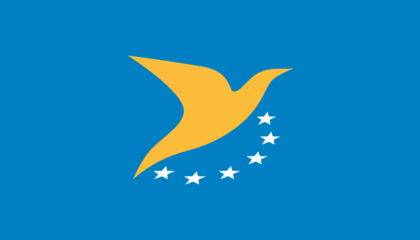
European Plan for Aviation Safety 2023-2025 (EPAS): Impact on Business aviation
On the 17th of January, the European Union Agency for Aviation Safety (EASA) published the latest edition of the European Plan for Aviation Safety (EPAS) 2023-2025. Let's dive into what it entails for Business Aviation.
On the 17th of January, the European Union Agency for Aviation Safety (EASA) published the latest edition of the European Plan for Aviation Safety (EPAS) 2023-2025.
Some of our members might recall a newly printed, thin handout, of 50 pages maximum, that was made available at the EBAA Annual General Meeting (AGM) in 2019. Accompanying this was an Excel file for all EASA tasks made available to EASA stakeholders. Since then, the EPAS has changed and evolved both in size and importance within the scope of EASA activities. During the Covid-19 pandemic, EASA decided to use the EPAS not only in the context of a Regional Aviation Safety Plan to complement the ICAO Global Aviation Safety Plan (GASP) and to set the scene for individual state safety plans, but also as the work plan for all future EASA activities.
With the new 2023-2025 edition this has in practice been achieved and the EPAS has grown to 3 volumes.
The three volumes, available via the links below, cover the following aspects:
Volume 3 Safety Risk portfolios, with the key safety issues
With this year’s EPAS there are some novelties, the main being that the Strategic priorities, Volume 1, are not going to be revised annually as before, and that the time frame is reduced to three years rather than the five years as in earlier editions. An annual revision will be continued to be conducted for the Actions, Volume 2, in an effort to provide a degree of stability in the strategic priorities for EASA. As of last year’s edition, Safety Risk Portfolio, Volume 3, is incorporated as part of the EPAS rather than a standalone annual safety report.
The work on EPAS 2024 edition has already started and for that next edition there should be no changes to Volume 1 unless there are some events that makes it necessary, such as a crisis in the magnitude of Covid or new developments regarding the invasion of Ukraine. Volume 2 will be revised to remove completed tasks and to include new tasks based on the strategic goals in Vol 1 and the safety risk register in vol 3. Inputs from the EASA advisory bodies, reports, audits and the likes are used by EASA to prioritise and evaluate each task.
With the transition from being a regional aviation safety plan to effectively becoming the strategic- and work-plan for EASA, the importance of the EPAS has indeed increased and it is reasonable to expect that if an issue is not covered by the EPAS then it will take time and effort to make it happen.
Highlights for Business aviation
As it can be seen in the list of new strategic priorities taken from an EASA community article, enabling proportional rules for Business aviation is one of the new strategic priorities, and will remain so for the next three years at least as the strategic priorities are not intended to be revised until 2025.
The new priorities for 2023-2025:
- Systemic safety and resilience.
- Address the impact of climate change on safety.
- Balance societal needs with aviation safety.
- Competence of personnel.
- Implement Competency Based Training Assessment across domains.
- Ensure availability of Data for Training (Evidence Based Training).
- Operational safety in the different domains.
- Ensure the availability of high-quality geo-data.
- Enable proportionate rules for Business aviation.
- Improve safety assessment of Human Factors in aircraft certification.
- Ensure the safety of ATM/ANS ground equipment.
- Create a certification system for Aerodrome equipment.
- Safe and sustainable integration of new technologies and concepts.
- Digitalisation in Aviation – includes ‘EU electronic licences’.
- Enable new business models in air operations (group operations etc.)
- Environment
How this will be achieved and in what form of task is outlined in more detail in Volume 2 covering all EASA tasks, be it Safety Promotion-, Rulemaking-, Evaluation- or Research tasks. A selection of relevant and focused EASA tasks for Business aviation is listed below. This list is just an example and by no means exhaustive as most EASA tasks will have impact on Business aviation, as well as other sectors of aviation, for example, tasks under “All Weather Operations”.
EVT.0013 Evaluation of the rules for commercial, small-size aeroplane operators under Part-CAT and Part-SPO
Based on stakeholder requests made through the EASA candidate issue register, an evaluation task on the analysis of the proportionality of the rules for commercial, small-size aeroplane operators under Part-CAT and Part-SPO is proposed. The objective of the task is to analyse the relevance in terms of proportionality of the rules for small aeroplane operators and of the potential administrative burden and inefficiencies they cause.
RMT.0392 Regular update of the air operations rules
Subtask 2 will address the following topics :
- Review of the operations requirements applicable to group operations.
- Operational requirements for flights related to design and production (‘manufacturer flights’) (former RMT.0348).
- Transposition of several amended ICAO SARPs, namely regarding flight data monitoring (FDM) programme performance and the ‘erase’ function of the Cockpit Voice Recorders (CVR), Airborne Image Recorders (AIR).
- Possible review of standard passenger weights (former RMT.0312) based on a survey to be commissioned by EASA.
- Review of the definition of ‘complex motor-powered aircraft’ (CMPA)
RMT.0739 Introduction of extended minimum-crew operations (eMCO)
Industry is currently developing technologies to allow the safe operation of large passenger aeroplanes by a single pilot during the cruise phase of the flight (extended minimum-crew operations (eMCO)).
RMT.0493 Update and harmonisation of the FTL rules for CAT by aeroplanes for air taxi and single-pilot operations
Develop harmonised and state-of-the-art rules for air taxi and single-pilot operations taking into account operational experience and recent scientific evidence.





